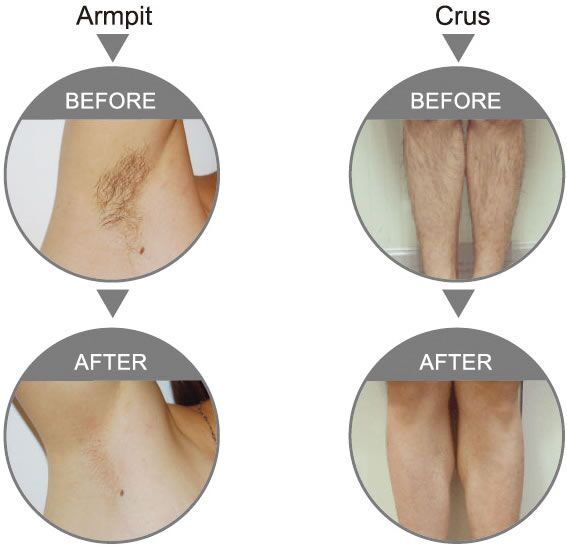Wiki Article
Mastering the Art of Waxing: Necessary Tips for a Painless Hair Removal Experience
In the realm of individual grooming, mastering the art of waxing is an ability that can dramatically enhance one's hair elimination experience. The procedure of waxing, though efficient in attaining smooth skin, can often be related to pain and pain otherwise executed correctly. By comprehending and executing vital suggestions, people can browse this hair removal method with convenience and marginal discomfort. From pre-waxing prep work to selecting the right wax and understanding appropriate waxing methods, the journey to a pain-free waxing experience is paved with knowledge and know-how.
Pre-Waxing Prep Work
Prior to going through a waxing session, it is important to correctly prepare your skin to decrease pain and accomplish optimum hair elimination results. Begin by scrubing your skin a day or more before your visit to eliminate dead skin cells and protect against in-grown hairs. This action assists the wax adhere much better to the hair, ensuring an extra effective elimination process. Stay clear of moisturizing on the day of your shaving session as it can produce a barrier between the wax and your hair, causing much less successful results. In addition, it is advisable to cut your hair to concerning a quarter of an inch prior to waxing to avoid unnecessary discomfort during the procedure.
Moreover, it is important to cleanse your skin completely before waxing to remove any kind of oils, lotions, or dirt that could conflict with the wax's ability to grasp the hair. This step not only improves the performance of the shaving procedure however also helps in reducing the risk of post-waxing outbreaks - Laser Hair Removal. By complying with these pre-waxing prep work steps, you can make certain a smoother and much more comfy hair elimination experience

Choosing the Right Wax
Selecting the appropriate sort of wax is important for ensuring a effective and comfortable hair removal procedure. There are a number of sorts of waxes readily available, each accommodating various skin types and hair structures. The 2 primary groups of wax are hard wax and soft wax. Difficult wax appropriates for sensitive locations like the face, underarms, and swimsuit line as it adheres only to the hair, making it much less painful for these delicate locations. On the other hand, soft wax is suitable for larger locations like legs and arms as it is used thinly and removed with fabric strips.
When choosing a wax, consider your skin sensitivity, hair thickness, and the location you prepare to wax. For those with delicate skin, hypoallergenic waxes with added comforting agents like chamomile or aloe vera can help minimize irritation. Rugged hair may require a wax particularly developed for solid hair removal. Additionally, if you are brand-new to waxing, it might be useful to begin with a gentle formula to determine your skin's response prior to trying extra powerful options. Consulting with an moved here expert esthetician can additionally give useful understanding right into the best wax for your individual needs.
Appropriate Waxing Technique
To begin, it is important to clean the skin thoroughly before using the wax. Furthermore, constantly ensure that the wax is heated up to the appropriate temperature level to stay clear of burns or ineffective hair removal. Applying the wax in the direction of hair growth and removing it against the hair development aids to ensure that the hair is pulled from the root, resulting in smoother and longer-lasting results.
In addition, utilizing tiny sections of wax at once and pushing strongly on the wax strip before removal can aid boost the effectiveness of the procedure. Last but not least, bear in mind to use gentle pressure on the skin after waxing to minimize and soothe any type of pain redness. By complying with these appropriate shaving methods, you can accomplish a more pleasant and successful hair removal experience.
Aftercare Tips

After waxing, it's critical to keep the waxed area clean and free from look at this now toxic irritants. Exfoliating the skin 2-3 times a week, starting a few days after waxing, can likewise help in stopping in-grown hairs and keeping the skin smooth.
In addition, it's suggested to abstain from tasks that might trigger excessive sweating, such as intense workouts, right away after waxing to stop more irritability. If any soreness or bumps linger after waxing, using a cold compress or aloe vera gel can aid decrease inflammation - Laser Hair see this page Removal. Complying with these aftercare tips faithfully can ensure a effective and comfy waxing experience with resilient outcomes
Troubleshooting Common Issues
Another issue is ingrown hairs, where hair curls back or grows sidewards into the skin after waxing. Furthermore, if you experience bruising or inflammation after waxing, applying a cool compress can decrease inflammation and calm the skin. By attending to these usual waxing issues proactively, you can improve the overall efficiency and convenience of your hair elimination routine.
Final Thought
In verdict, mastering the art of waxing needs appropriate prep work, selecting the ideal wax, utilizing the proper method, and following aftercare suggestions. With method and interest to detail, waxing can be an effective hair elimination method.
Moreover, it is vital to cleanse your skin thoroughly prior to waxing to eliminate any oils, lotions, or dust that can conflict with the wax's capability to hold the hair. The two main classifications of wax are hard wax and soft wax.When selecting a wax, consider your skin level of sensitivity, hair thickness, and the area you plan to wax.Moreover, making use of tiny sections of wax at a time and pressing securely on the wax strip before removal can help boost the efficacy of the process. After waxing, it's critical to maintain the waxed area free and tidy from toxic irritants.
Report this wiki page





















